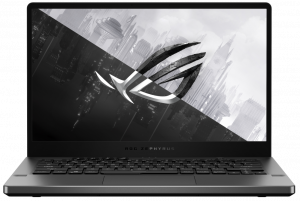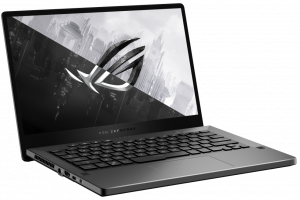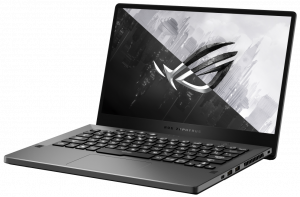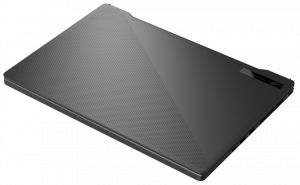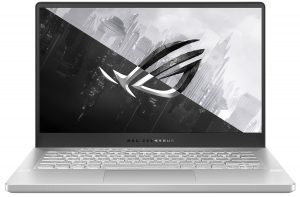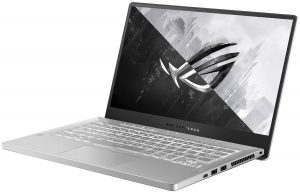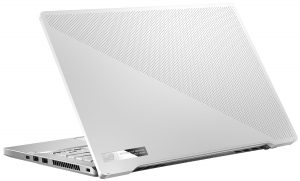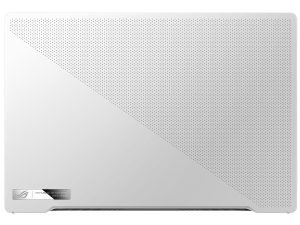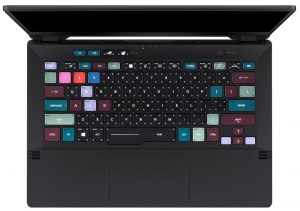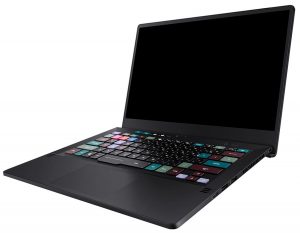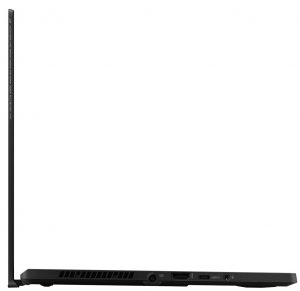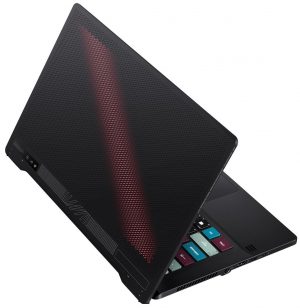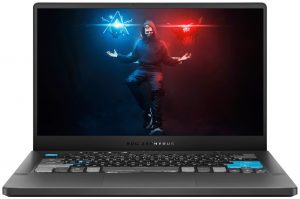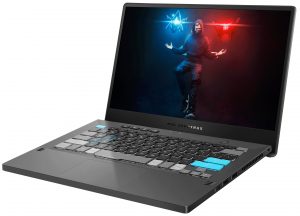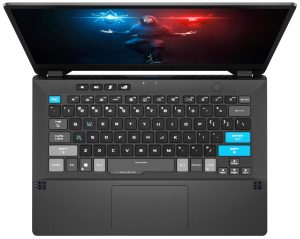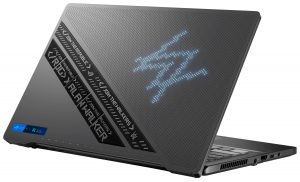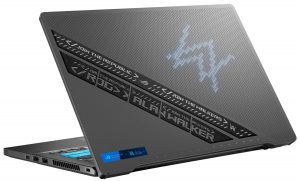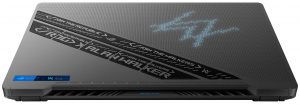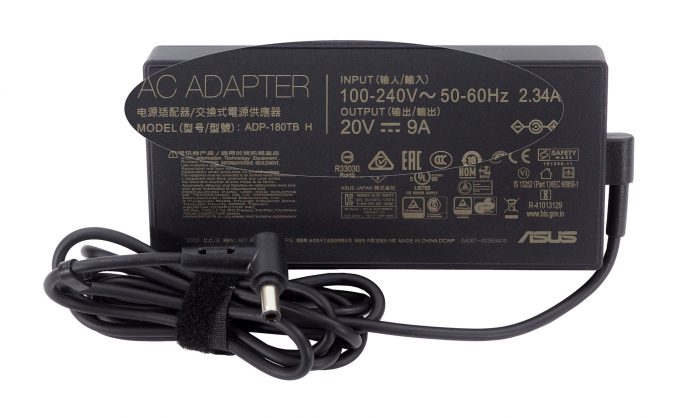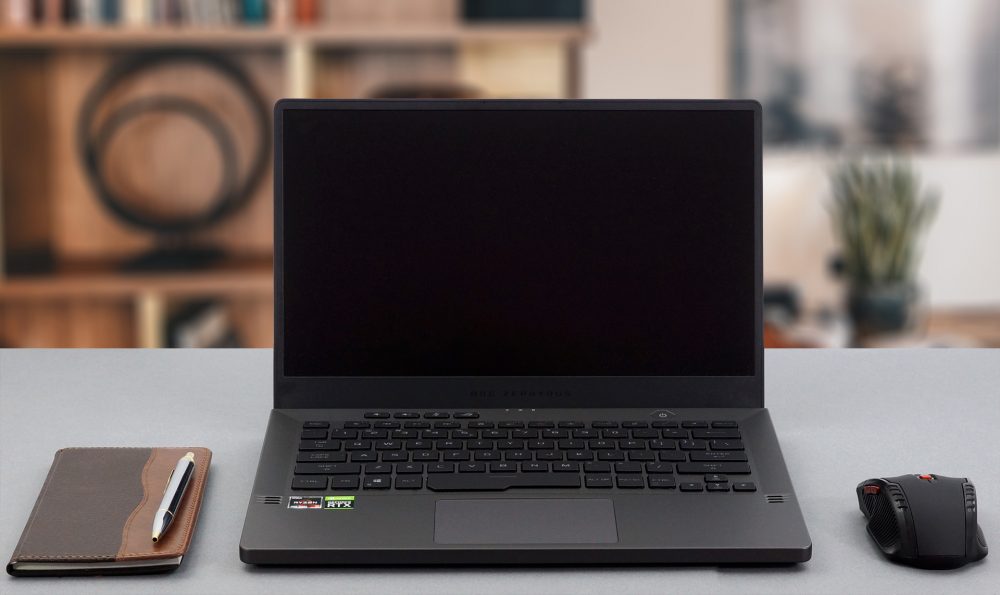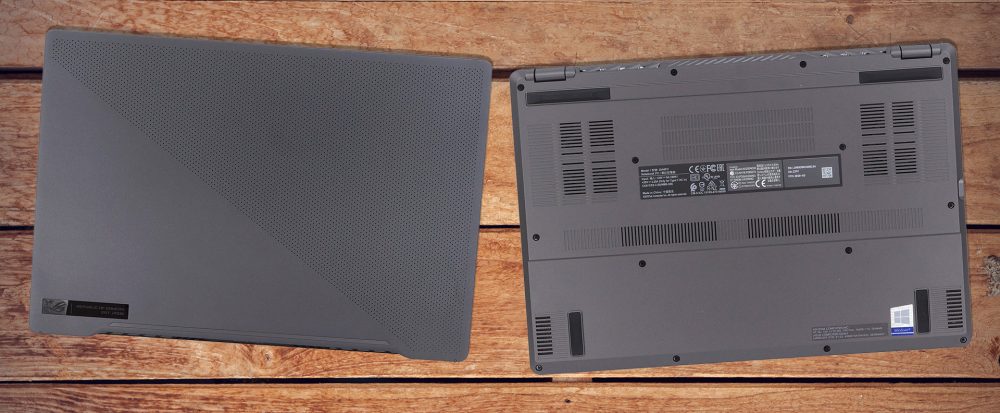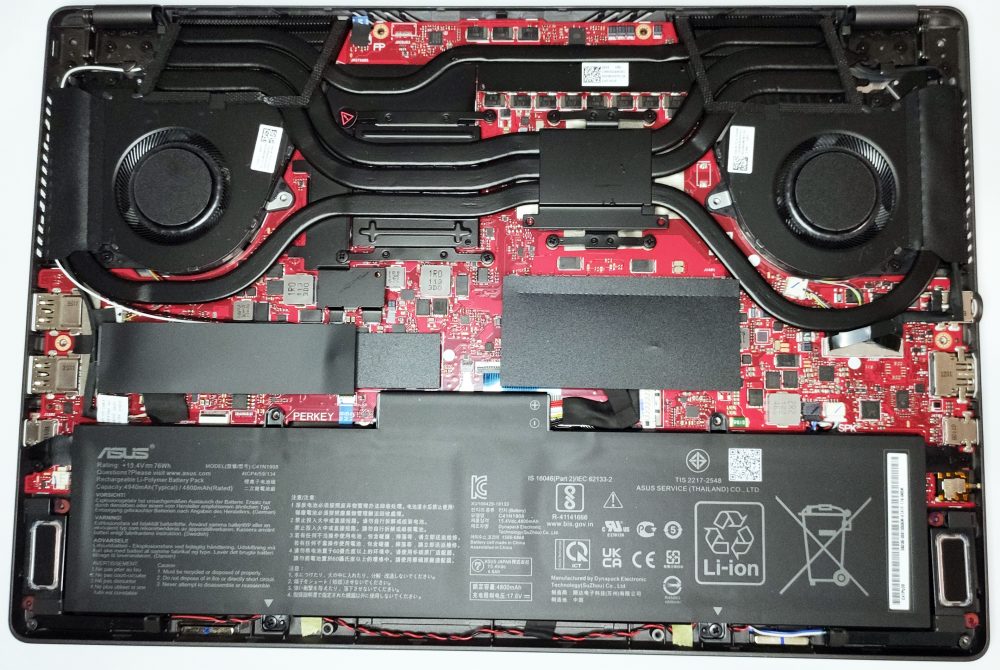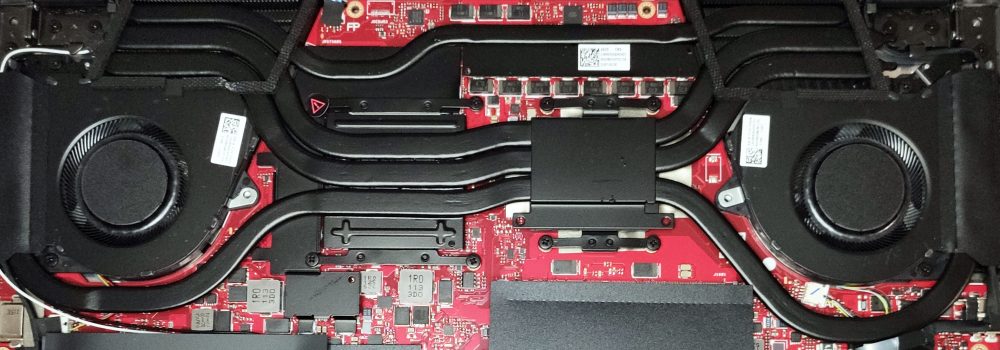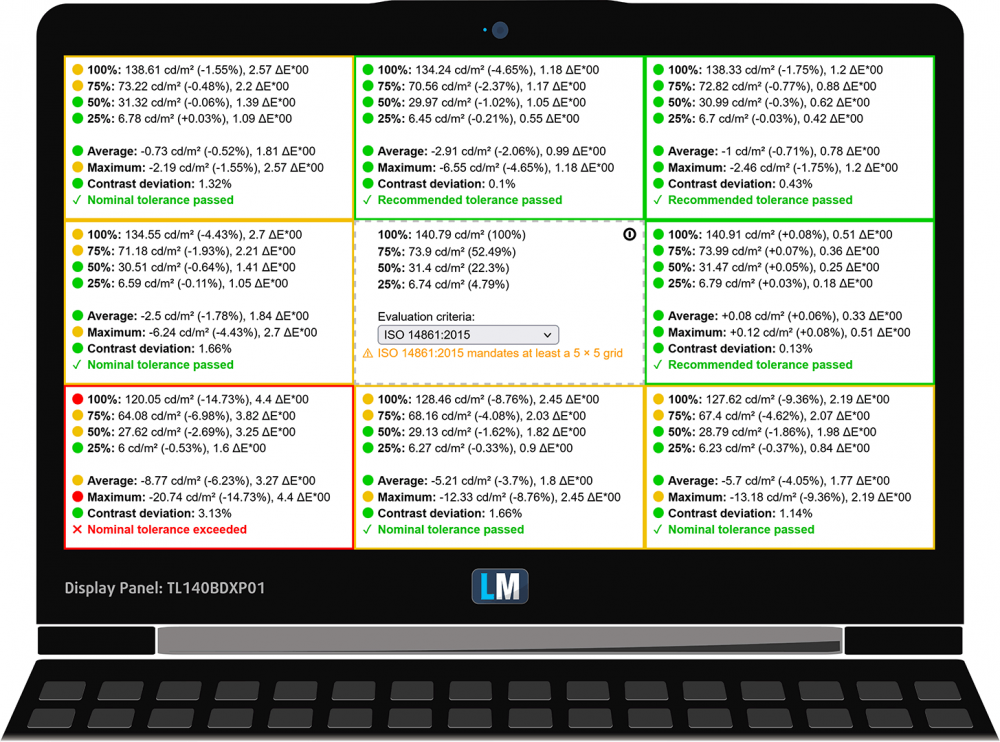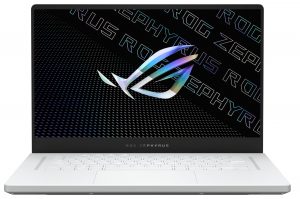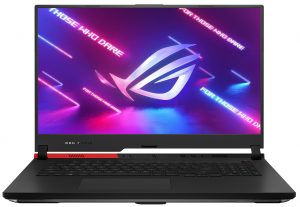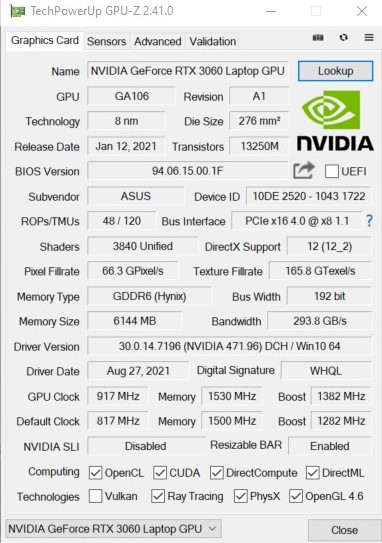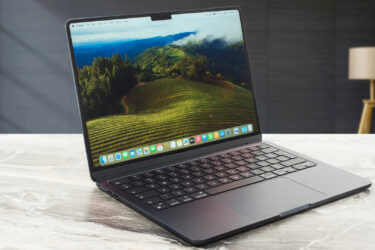ASUS ROG Zephyrus G14 GA401 (2021) review – improved cooling and better hardware
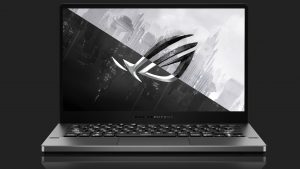 The updated version of the ASUS ROG Zephyrus G14 GA401 has some interesting new things under the hood like AMD Zen 3 CPUs and NVIDIA Ampere GPUs. So, powerful hardware that is fitted in a shell of a compact 14-incher – it may sound exciting for a lot of you. Actually, we have a review of the first iteration of this device and it has the same hardware formula – powerful AMD CPUs with up to 8 cores and good NVIDIA GPU video card options.
The updated version of the ASUS ROG Zephyrus G14 GA401 has some interesting new things under the hood like AMD Zen 3 CPUs and NVIDIA Ampere GPUs. So, powerful hardware that is fitted in a shell of a compact 14-incher – it may sound exciting for a lot of you. Actually, we have a review of the first iteration of this device and it has the same hardware formula – powerful AMD CPUs with up to 8 cores and good NVIDIA GPU video card options.
The 2021 version of this device looks (almost) identical to the 2020 variant. As we said, the updates are hidden under the bonnet. In short, our device is equipped with an AMD Ryzen 9 5900HS – that is a strong 8-core Zen 3 processor with 16 threads and a 35W TDP. This kind of TDP sounds like a good idea given the fact that we are talking about a small gaming device that has a slim profile (ok, for that kind of laptop). In most cases, the regular 45W version of Ryzen 9 5900H may be a bit too much for this design so it looks like ASUS has done the right thing choosing the 35W variant of this Zen 3 processor.
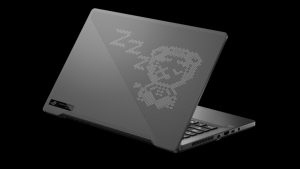 We’ve mentioned that it’s a gaming device but in reality, this could be a good all-rounder. Sure, this notebook has a decent NVIDIA GeForce RTX 3060 (80W) but when you want mobility it can be quickly transformed into a portable laptop with just a few clicks. All you need is the ASUS Armory Crate app (that comes preinstalled in most cases) – when you apply the Silent profile the AMD Radeon RX Vega 8 (R4000/5000, 35/45W) will improve the battery life.
We’ve mentioned that it’s a gaming device but in reality, this could be a good all-rounder. Sure, this notebook has a decent NVIDIA GeForce RTX 3060 (80W) but when you want mobility it can be quickly transformed into a portable laptop with just a few clicks. All you need is the ASUS Armory Crate app (that comes preinstalled in most cases) – when you apply the Silent profile the AMD Radeon RX Vega 8 (R4000/5000, 35/45W) will improve the battery life.
Overall, that’s a machine that can be altered in whatever you want – a gaming device, a portable notebook that can be used in the park, or you can take it with you in the office and it’ll do the job as well because of its powerful hardware. Just like last year’s laptop, the 2021 variant can be equipped with the fancy AniMe Matrix (this is an optional feature) that is located on the lid of the laptop and has 1215 mini LEDs that can be customized to show different info like battery life, some custom text that you like, etc.
You can check the prices and configurations in our Specs System: https://laptopmedia.com/series/asus-rog-zephyrus-g14-ga401/
Contents
- Video Review
- Specs Sheet
- What’s in the box?
- Design and construction
- Disassembly, upgrade options and maintenance
- Display quality
- Health impact – PWM / Blue Light
- Buy our profiles
- Sound
- Drivers
- CPU options
- GPU options
- Gaming tests (internal display)
- Gaming tests (external display)
- Temperatures and comfort
- Gaming comfort
- Verdict
Video Review
Specs Sheet
- HDD/SSD
- up to 8000GB SSD
- M.2 Slot
- 1x 2280 PCIe NVMe 3.0 x4 See photo
- RAM
- up to 40GB
- OS
- Windows 10 Home, Windows 11 Home, Windows 11 Pro, Windows 10 Pro
- Battery
- 76Wh, 4-cell
- Body material
- Aluminum, Magnesium alloy
- Dimensions
- 324 x 222 x 17.9 ~ 19.9 mm (12.76" x 8.74" x 0.70")
- Weight
- 1.60 kg (3.5 lbs)
- Ports and connectivity
- 2x USB Type-A
- 3.2 Gen 1 (5 Gbps)
- 1x USB Type-C
- 3.2 Gen 2 (10 Gbps)
- 1x USB Type-C
- 3.2 Gen 2 (10 Gbps), DisplayPort, Sleep and Charge
- HDMI
- 2.0b
- Wi-Fi
- 802.11ax
- Bluetooth
- 5.0
- Audio jack
- 3.5 mm combo
- Features
- Fingerprint reader
- optional
- Web camera
- Backlit keyboard
- Speakers
- 2x 2.5W, Smart AMP technology
- Optical drive
- Security Lock slot
- Kensington Lock
All ASUS ROG Zephyrus G14 GA401 configurations
What’s in the box?
The box contains a 180W power adapter, some manuals, and the notebook itself.
Design and construction
The design of the laptop is a distinctive one. First of all, the build quality is good – the lid is made of aluminum and we have a magnesium-alloy base. The AniMe Matrix LEDs are an optional extra so if you want it just make sure that you have checked the specs of the laptop that you want to buy because the regular model comes with CNC-drilled holes on the lid. Measurements-wide, the device feels like a compact piece of hardware and it really is – it weighs 1.70 kg and the profile is 19.9mm. The less-powerful variations are a bit slimmer and lighter – 17.9mm for the profile and their weight is 1.60 kilos (note that the device we show you is part of the bigger siblings).
The lid can be easily opened with a single hand. As you’re doing it, you can spot the ErgoLift hinge that lifts the base of the laptop, providing even more fresh air for the intake fans which affects positively the performance of the cooling solution. Unfortunately, despite the fact that it’s made of aluminum, the lid isn’t very sturdy and you can observe some bends and flexes while opening it, which is definitely not good.
Well, the keyboard lacks a NumberPad section but probably we are asking too much from such a small device – accountants that like to play games after work should probably look somewhere else if this feature is mandatory. On the bright side, the keyboard has a backlight, the key travel is good and the feedback is clicky enough. This unit is good for both typing and gaming and its only downside are the small Arrow keys.
We are happy to see the four dedicated buttons placed on the upper section of the keyboard. These keys can be used for quick access to volume, microphone (on/off), and for starting the ROG Armory Crate. Some models come with a fingerprint reader that is part of the Power On/Off button. This ASUS laptop lacks a Web cam that certainly leads to a safer Web browsing experience but unfortunately if you need a camera you have to buy a separate 3rd party unit. We like the fact that this laptop isn’t a fingerprint magnet.
Now, the touchpad has a good gliding surface, and that results in easy finger sliding and in addition, the feedback is accurate as well.
Last but not least, we’ll check the bottom of the laptop – it has four ventilation grills that are smartly placed under the SODIMMs, the M.2 placement, and (what a surprise) the cooling fans. Because of the small shell of the notebook, it’s exhausting the hot air through four vents – two of them are blowing hot air in front of the “chin” below the display (not a great idea actually, the panel area beneath the display gets hot during gaming) and the other two are side-placed. The sound department is represented by four speakers and two of them are rated at 0.7W while the other two have a 2.5W of power.
Ports
On the left side of the laptop, we can spot an HDMI 2.0b connector, a USB Type-C 3.1 (Gen. 2) port that has Power Delivery and DisplayPort 1.4 capabilities, and a 3.5mm audio jack. The right side has a USB Type-A 3.1 (Gen. 1) ports and a USB Type-C 3.1 (Gen. 2) port.
Disassembly, upgrade options and maintenance
For removing the bottom plate, you have to unscrew 14 Phillips-head screws that are holding the plate to the base. In reality, it’s not a hard process at all – just remove the screws and the bottom plate isn’t too hard to be popped up. You can use whatever you have around you – a pry tool, credit/debit card, or something similar.
The cooling solution looks promising. It has 4 heat pipes in total (and of course, two cooling fans) – three pipes are shared for cooling the CPU and the GPU while the other one is solely dedicated to the memory modules and the VRAMs as well. This cooling is a bit different compared to the 2020 device that has five heat pipes but it seems that the new unit is doing a better job (check the temperature results at the end of this review).
When it comes to upgradability, the laptop comes with a single stick of soldered 8GB/16GB DDR4 RAM but at least there is one free SODIMM slot it can handle another 8GB or 16GB memory module. The maximum possible memory configuration in dual-channel mode is 32GB of DDR4 3200 MHz RAM. In terms of storage, there is a single M.2 PCIe x4 drive and of course, you can upgrade it to something that has a bigger capacity (in our case we have a 1TB drive). Sadly, there is no other slot for NVMe SSD or a regular SATA port.
A 76Wh battery unit is a bit of a pleasant surprise for such a small shell – we’ll discuss that further in the battery section.
Display quality
ASUS ROG Zephyrus G14 GA401 (2021)’s display has a QHD IPS panel, model number TL140BDXP01-0 (TMX1400). Its diagonal is 14″ (35.5 cm), and the resolution – 2560 х 1440. Additionally, the screen ratio is 16:9, the pixel density – 209 ppi, their pitch – 0.12 x 0.12 mm. The screen can be considered Retina when viewed from at least 41 cm (from this distance, the average human eye can’t see the individual pixels and is excellent for a laptop).
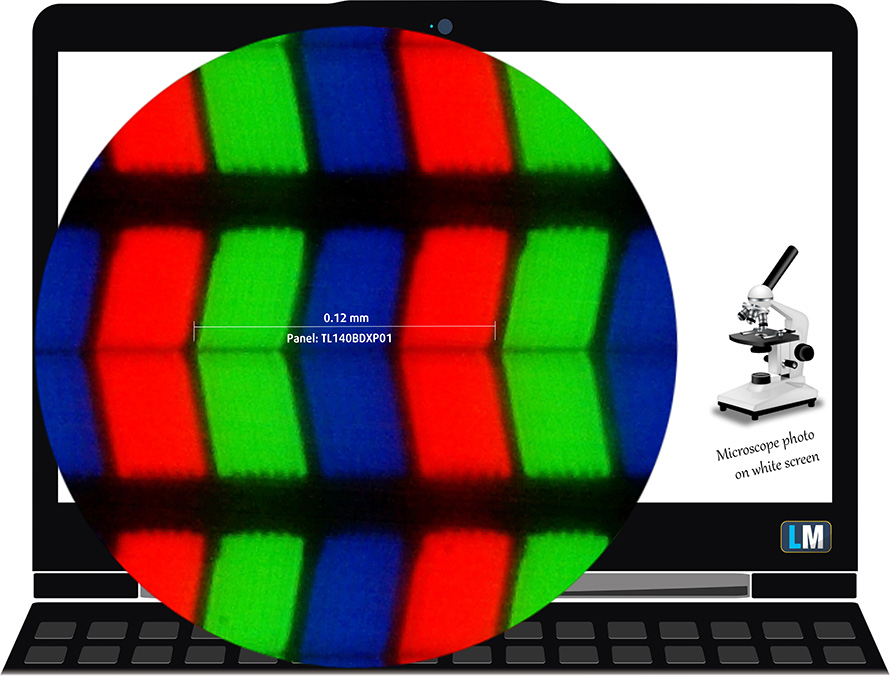
It has good viewing angles. We have provided images at 45 degrees to evaluate quality.

The maximum measured brightness is 348 nits (cd/m2) in the middle of the screen and 327 nits (cd/m2) average across the surface with a maximum deviation of 15%. The Correlated Color Temperature on a white screen and at maximum brightness is 7100K (average) – colder than the 6500K optimum for sRGB.
In the illustration below you can see how the display performs from uniformity perspective. The illustration below shows how matters are for operational brightness levels (approximately 140 nits) – in this particular case at 51% Brightness (White level = 142 cd/m2, Black level = 0.13 cd/m2).
Values of dE2000 over 4.0 should not occur, and this parameter is one of the first you should check if you intend to use the laptop for color-sensitive work (a maximum tolerance of 2.0 ). The contrast ratio is decent – 1050:1.
To make sure we are on the same page, we would like to give you a little introduction to the sRGB color gamut and the Adobe RGB. To start, there’s the CIE 1976 Uniform Chromaticity Diagram that represents the visible specter of colors by the human eye, giving you a better perception of the color gamut coverage and the color accuracy.
Inside the black triangle, you will see the standard color gamut (sRGB) that is being used by millions of people in HDTV and on the web. As for the Adobe RGB, this is used in professional cameras, monitors, etc for printing. Basically, colors inside the black triangle are used by everyone and this is the essential part of the color quality and color accuracy of a mainstream notebook.
Still, we’ve included other color spaces like the famous DCI-P3 standard used by movie studios, as well as the digital UHD Rec.2020 standard. Rec.2020, however, is still a thing of the future and it’s difficult for today’s displays to cover that well. We’ve also included the so-called Michael Pointer gamut, or Pointer’s gamut, which represents the colors that naturally occur around us every day.
The yellow dotted line shows ASUS ROG Zephyrus G14 GA401 (2021)’s color gamut coverage.
Its display covers 100% of the sRGB/ITU-R BT.709 (web/HDTV standard) in CIE1976.
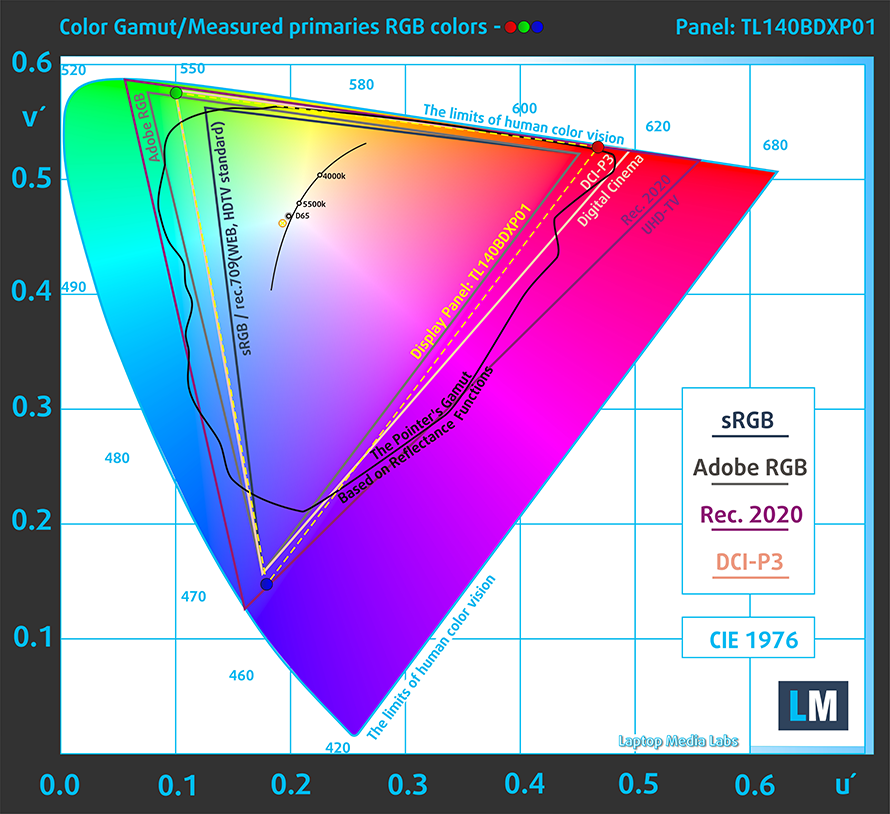
Our “Design and Gaming” profile delivers optimal color temperature (6500K) at 140 cd/m2 luminance and sRGB gamma mode.
We tested the accuracy of the display with 24 commonly used colors like light and dark human skin, blue sky, green grass, orange, etc. You can check out the results at factory condition and also, with the “Design and Gaming” profile.
Below you can compare the scores of ASUS ROG Zephyrus G14 GA401 (2021) with the default settings (left), and with the “Gaming and Web design” profile (right).
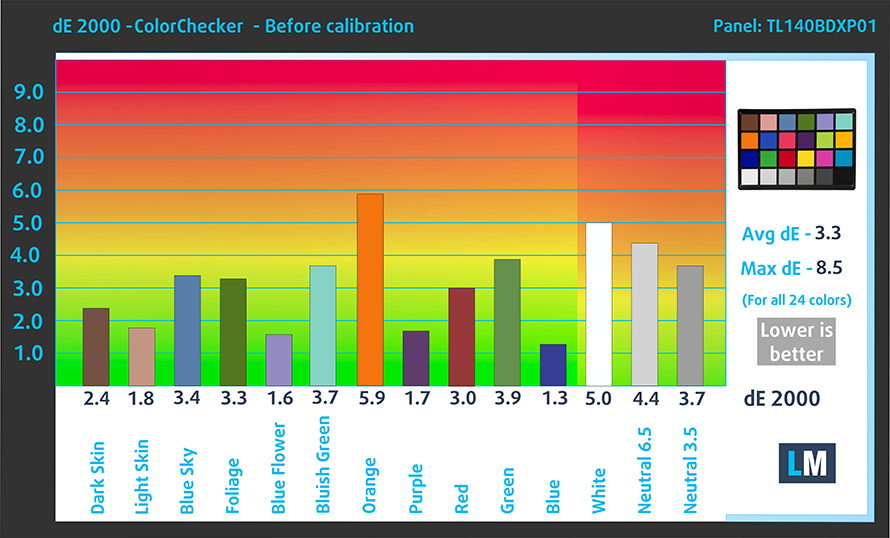
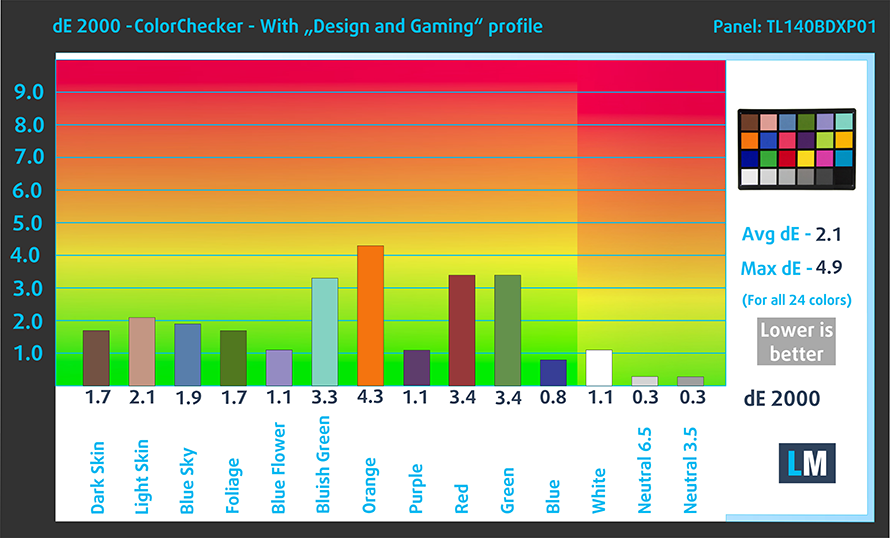
The next figure shows how well the display is able to reproduce really dark parts of an image, which is essential when watching movies or playing games in low ambient light.
The left side of the image represents the display with stock settings, while the right one is with the “Gaming and Web Design” profile activated. On the horizontal axis, you will find the grayscale and on the vertical axis – the luminance of the display. On the two graphs below you can easily check for yourself how your display handles the darkest nuances but keep in mind that this also depends on the settings of your current display, the calibration, the viewing angle, and the surrounding light conditions.
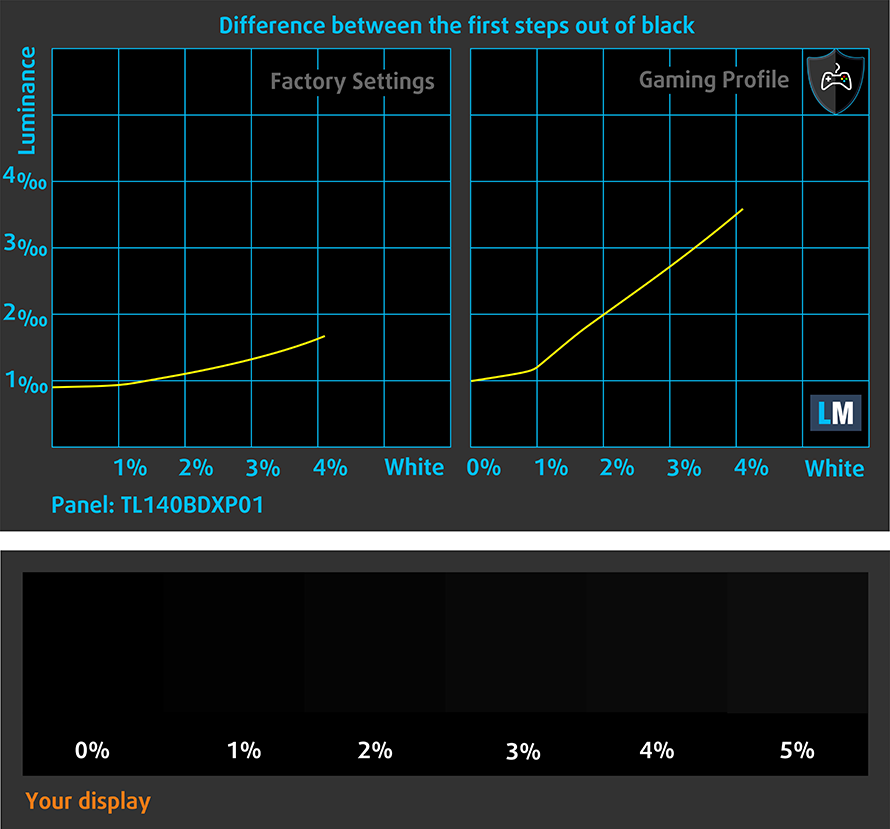
Response time (Gaming capabilities)
We test the reaction time of the pixels with the usual “black-to-white” and “white-to-black” method from 10% to 90% and vice versa.
We recorded Fall Time + Rise Time = 12 ms.
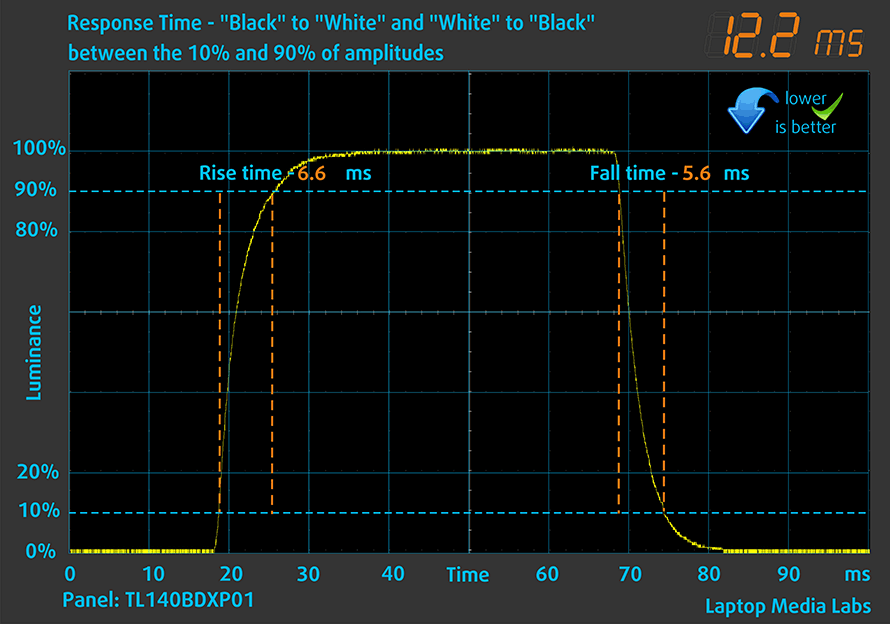
Health impact – PWM / Blue Light
PWM (Screen flickering)
Pulse-width modulation (PWM) is an easy way to control monitor brightness. When you lower the brightness, the light intensity of the backlight is not lowered, but instead turned off and on by the electronics with a frequency indistinguishable to the human eye. In these light impulses, the light/no-light time ratio varies, while brightness remains unchanged, which is harmful to your eyes. You can read more about that in our dedicated article on PWM.
ASUS ROG Zephyrus G14 GA401 (2021)’s display is a PWM-free unit. This means it’s suitable for prolonged periods of usage.
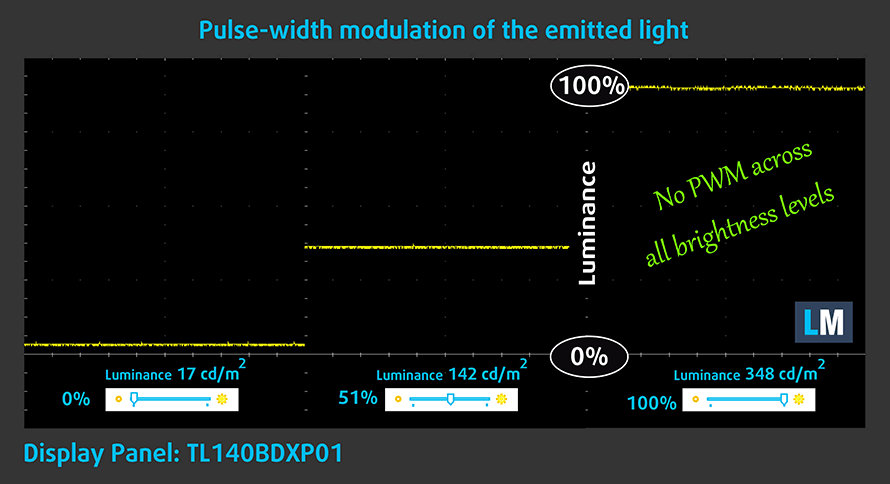
Blue light emissions
Installing our Health-Guard profile not only eliminates PWM but also reduces the harmful Blue Light emissions while keeping the colors of the screen perceptually accurate. If you’re not familiar with the Blue light, the TL;DR version is – emissions that negatively affect your eyes, skin, and your whole body. You can find more information about that in our dedicated article on Blue Light.
Conclusions
ASUS ROG Zephyrus G14 GA401 (2021)’s display has an IPS panel with high resolution (1440p), decent contrast ratio, good viewing angles, and full coverage (100%) of the sRGB color gamut. In addition, the backlight doesn’t flicker at any brightness level, and the color reproduction is definitely accurate. The average dE of the default settings is around 3.3, so you can get our Gaming and Web design profile, which improves the value to 2.1.
Buy our profiles
Since our profiles are tailored for each individual display model, this article and its respective profile package are meant for ASUS ROG Zephyrus G14 GA401 (2021) configurations with 14.0″ TL140BDXP01-0 (TMX1400) (QHD, 2560 × 1440) IPS.
*Should you have problems with downloading the purchased file, try using a different browser to open the link you’ll receive via e-mail. If the download target is a .php file instead of an archive, change the file extension to .zip or contact us at [email protected].
Read more about the profiles HERE.
In addition to receiving efficient and health-friendly profiles, by buying LaptopMedia's products you also support the development of our labs, where we test devices in order to produce the most objective reviews possible.

Design and Gaming
This profile is aimed at designers who work with colors professionally, and for games and movies as well. Design and Gaming takes display panels to their limits, making them as accurate as possible in the sRGB IEC61966-2-1 standard for Web and HDTV, at white point D65.

Health-Guard
Health-Guard eliminates the harmful Pulse-Width Modulation (PWM) and reduces the negative Blue Light which affects our eyes and body. Since it’s custom tailored for every panel, it manages to keep the colors perceptually accurate. Health-Guard simulates paper so the pressure on the eyes is greatly reduced.
Get all 3 profiles with 33% discount
Sound
The sound quality of the ASUS ROG Zephyrus G14 GA401 (2021) is loud and crisp. Moreover, the low, mid, and high tones are clear.
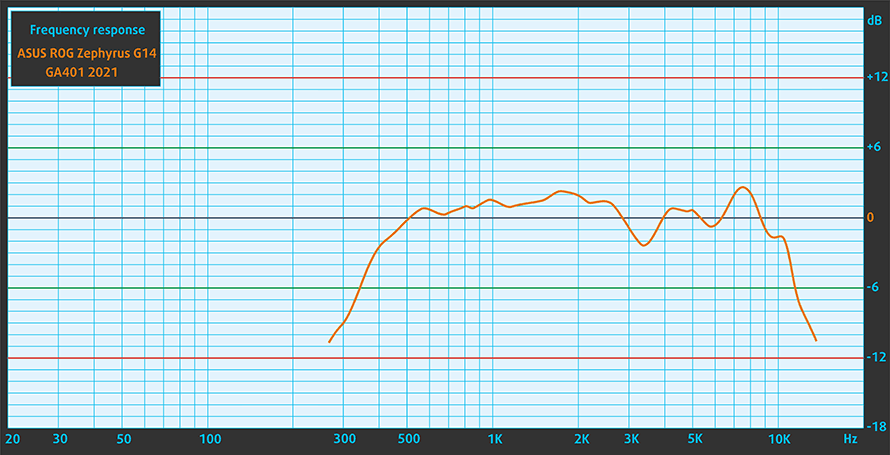
Drivers
All drivers and utilities for this notebook can be found here: https://rog.asus.com/us/laptops/rog-zephyrus/2021-rog-zephyrus-g14-series/helpdesk
CPU options
As far as we know, the 2021 version of the ASUS ROG Zephyrus G14 GA401 can be picked with AMD Ryzen 5900HS and NVIDIA GeForce RTX 3060 (80W) only. It seems that the new variant can be ordered with the best possible hardware for this model and if you want something not-so-powerful, you can check the 2020 model that can be ordered with different Zen 2 CPUs and previous-gen NVIDIA video cards.
Results are from the Cinebench R23 CPU test (the higher the score, the better)
Results are from our Photoshop benchmark test (the lower the score, the better)
GPU options
Once again, the only GPU variant is the NVIDIA GeForce RTX 3060 (80W) which isn’t a bad thing – this graphics card is a good mid-ranger.
Results are from the 3DMark: Time Spy (Graphics) benchmark (higher the score, the better)
Results are from the 3DMark: Fire Strike (Graphics) benchmark (higher the score, the better)
Results are from the Unigine Superposition benchmark (higher the score, the better)
Gaming tests (internal display)
| Metro Exodus | Full HD, Low (Check settings) | Full HD, High (Check settings) | Full HD, Extreme (Check settings) |
|---|---|---|---|
| GeForce RTX 3060 (80W) | 111 fps | 59 fps | 29 fps |
| Gears 5 | Full HD, Low (Check settings) | Full HD, Medium (Check settings) | Full HD, High (Check settings) | Full HD, Ultra (Check settings) |
|---|---|---|---|---|
| GeForce RTX 3060 (80W) | 146 fps | 104 fps | 89 fps | 71 fps |
| Assassin’s Creed Odyssey | Full HD, Low (Check settings) | Full HD, Medium (Check settings) | Full HD, High (Check settings) | Full HD, Ultra High (Check settings) |
|---|---|---|---|---|
| GeForce RTX 3060 (80W) | 97 fps | 87 fps | 71 fps | 48 fps |
Gaming tests (external display)










Temperatures and comfort
Max CPU load
In this test we use 100% on the CPU cores, monitoring their frequencies and chip temperature. The first column shows a computer’s reaction to a short load (2-10 seconds), the second column simulates a serious task (between 15 and 30 seconds), and the third column is a good indicator of how good the laptop is for long loads such as video rendering.
Average core frequency (base frequency + X); CPU temp.
| AMD Ryzen 9 5900HS (35W TDP) | 0:02 – 0:10 sec | 0:15 – 0:30 sec | 10:00 – 15:00 min |
|---|---|---|---|
| ASUS ROG Zephyrus G14 GA401 (2021) | 3.42 GHz (B+14%) @ 67°C | 3.40 GHz (B+13%) @ 72°C | 3.50 GHz (B+17%) @ 87°C |
| ASUS ROG Zephyrus G15 GA503 | 3.57 GHz (B+19%) @ 69°C | 3.54 GHz (B+18%) @ 71°C | 3.57 GHz (B+19%) @ 79°C |
| AMD Ryzen 9 5900HX (45W TDP) | 0:02 – 0:10 sec | 0:15 – 0:30 sec | 10:00 – 15:00 min |
|---|---|---|---|
| Acer Nitro 5 (AN517-41) | 3.41 GHz (B+3%) @ 69°C | 3.42 GHz (B+4%) @ 74°C | 3.35 GHz (B+2%) @ 80°C |
| ASUS ROG Strix SCAR 17 G733 | 3.58 GHz (B+8%) @ 76°C | 3.55 GHz (B+8%) @ 81°C | 3.59 GHz (B+8%) @ 81°C |
| ASUS ROG Strix G17 G713 | 3.44 GHz (B+4%) @ 70°C | 3.38 GHz (B+2%) @ 72°C | 3.44 GHz (B+4%) @ 71°C |
Now, we can spot an improvement compared to the last year’s device that was equipped with the Ryzen 9 4900HS. The laptop was having a hard time keeping the CPU base clock around the 3.0 GHz mark in long loads. The 2021 sibling doesn’t have this problem – it’s keeping reasonable clocks and temperatures in short-to-medium loads and when it comes to prolonged periods of heavy usage it maintains 3.50 GHz average effective frequency while the CPU reaches 87°C. Not bad for a small notebook like this one.
Real-life gaming
| NVIDIA GeForce RTX 3060 (80W) | GPU frequency/ Core temp (after 2 min) | GPU frequency/ Core temp (after 30 min) |
|---|---|---|
| ASUS ROG Zephyrus G14 GA401 (2021) | 1722 MHz @ 75°C | 1656 MHz @ 82°C |
| NVIDIA GeForce RTX 2060 Max-Q | GPU frequency/ Core temp (after 2 min) | GPU frequency/ Core temp (after 30 min) |
| ASUS ROG Zephyrus G14 GA401 (2020) | 1478 MHz @ 77°C | 1436 MHz @ 84°C |
We put the result from the 2020 sibling just to show you that the new one comes with an improvement in the GPU temperatures as well no matter the fact that the cooling has to deal with a GPU that is more powerful than the GeForce RTX 2060 Max-Q.
Gaming comfort
Sadly but not unexpected, the laptop gets loud during heavy loads – the fans have to work hard to cool down the powerful internals that are sandwiched in a tiny space. Alas, the keyboard isn’t as cool as we wanted it to be because the whole shell is warm during gaming. At least the WASD area isn’t boiling hot and the same goes for the palm rest area – you’re going to feel that it’s warm but it’s fine for gaming. A cooling pad isn’t a bad idea for the summer.
Verdict
The updated version of the ASUS ROG Zephyrus G14 GA401 impresses us just like the 2020 variant. The new iteration has a lot to offer – it looks good – not too gamer-ish and that’s why you can use it for office purposes as well without being distracted by hundreds of glowing RGBs. Moreover, the device is compact and light as well which contributes to good portability and it’ll fit in most backpacks.
In this scenario, small doesn’t mean less powerful at the same time – this fella has a lot to offer when it comes to system power. The collaboration of AMD Ryzen 9 5900HS, GeForce RTX 3060 (80W), and a fast NVMe drive lead to a snappy performance. Daily tasks like Web browsing, watching videos, or editing office documents are a piece of cake for this machine. The CPU and GPU have enough power to handle heavier tasks like compression/decompression, picture and video editing, etc.
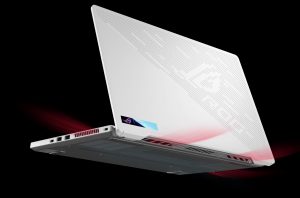 The build quality is good – we have an aluminum lid and magnesium-alloy base. The main body of the laptop is rigid and sturdy and it feels solid while typing or gaming while the lid seems a bit unstable but no one is perfect. The keyboard and touchpad combo left us with a positive feeling – the keyboard is good enough for gaming and it’s characterizing by decent key travel and clicky feedback. The touchpad is easy to use – it has a great surface for gliding and it’s accurate in the same.
The build quality is good – we have an aluminum lid and magnesium-alloy base. The main body of the laptop is rigid and sturdy and it feels solid while typing or gaming while the lid seems a bit unstable but no one is perfect. The keyboard and touchpad combo left us with a positive feeling – the keyboard is good enough for gaming and it’s characterizing by decent key travel and clicky feedback. The touchpad is easy to use – it has a great surface for gliding and it’s accurate in the same.
Compared to its 2020 version, the new ASUS ROG Zephyrus G14 GA401 comes with a more powerful AMD Zen 3 CPU (Ryzen 9 5900HS) and NVIDIA GeForce RTX 3060 (80W) that definitely packs more power compared to the last year’s top GPU option – the GeForce RTX 2060 Max-Q.
In addition to that, the CPU clocks during longer loads are drastically improved than the 2020 variant and now can have the full power of your CPU at your disposal when you want to “torture” it.
The ASUS ROG Zephyrus G14 GA401 (2021) looks and feels like a modern compact versatile machine and it really is. Just like most devices it has its flaws and the main one is the price – yes, this one isn’t an affordable machine. Despite its premium look and build, the device is loud during heavy loads and its shell isn’t too cool in this situation. We don’t like the absence of Thunderbolt support – a premium device like this should offer an extra like that. Ok, we’ll not complain too much about the lack of an SD card reader. Despite the abovementioned cons, this 14-inch gaming laptop remains one of the best offers on the market and if you’re on the hunt for a powerful, compact, and light gaming laptop you can shortlist it.
Pros
- Optional AniMe Matrix light that can be turned off for better battery life
- Nice keyboard with decent travel and clicky feedback, good for both typing and gaming
- Has one of the most beefier mobile chips
- 8GB or 16GB of soldered memory and one additional RAM SODIMM slot supporting 3200 MHz memory in dual-channel and NVMe drive support
- One of its USB Type-C ports can be used to charge the laptop or to output a DisplayPort 1.4 signal
- PWM-free display TL140BDXP01-0 (TMX1400)
- Has a good contrast ratio and comfortable viewing angles TL140BDXP01-0 (TMX1400)
- High resolution (1440p), 100% sRGB coverage and great color accuracy, partially thanks to our Gaming and Web design profile TL140BDXP01-0 (TMX1400)
Cons
- Lacks an SD card reader and Thunderbolt support
- The laptop gets loud and warm when gaming
- Expensive
You can check the prices and configurations in our Specs System: https://laptopmedia.com/series/asus-rog-zephyrus-g14-ga401/
